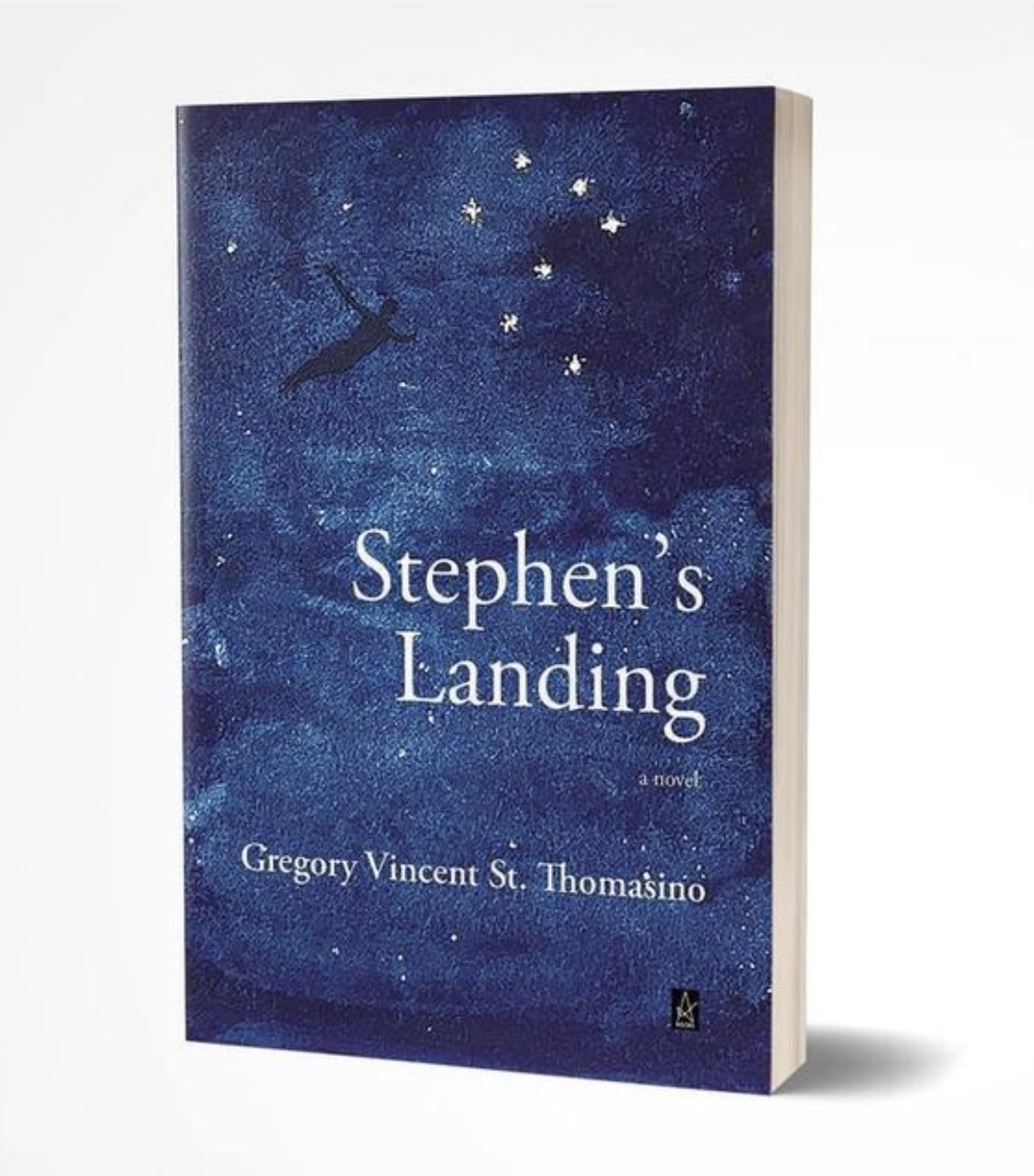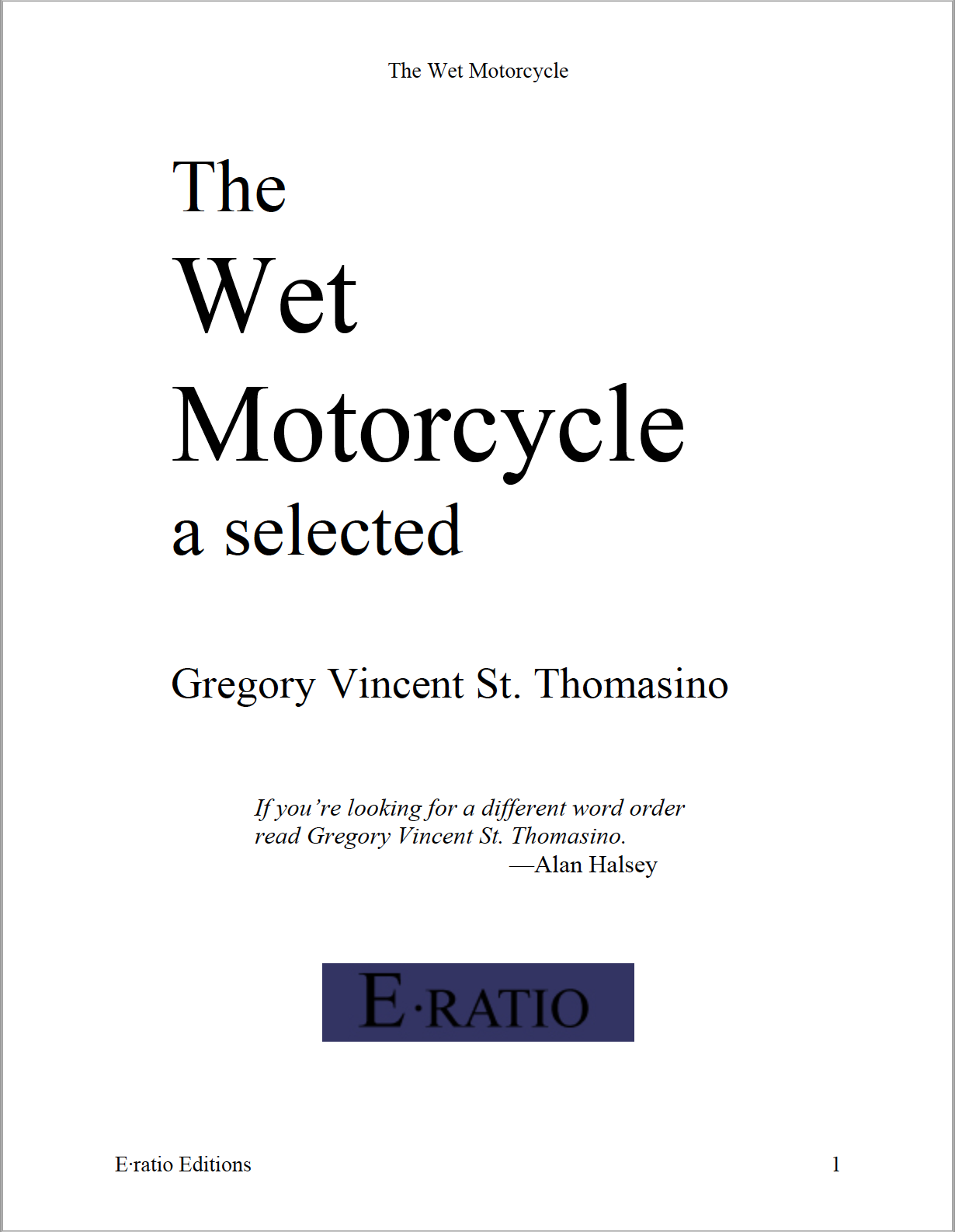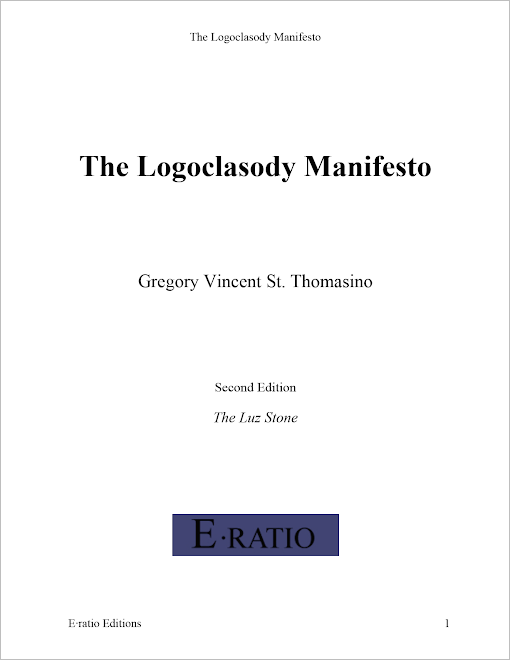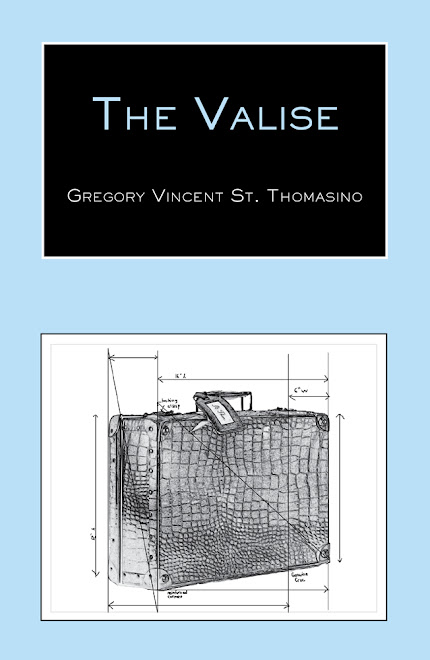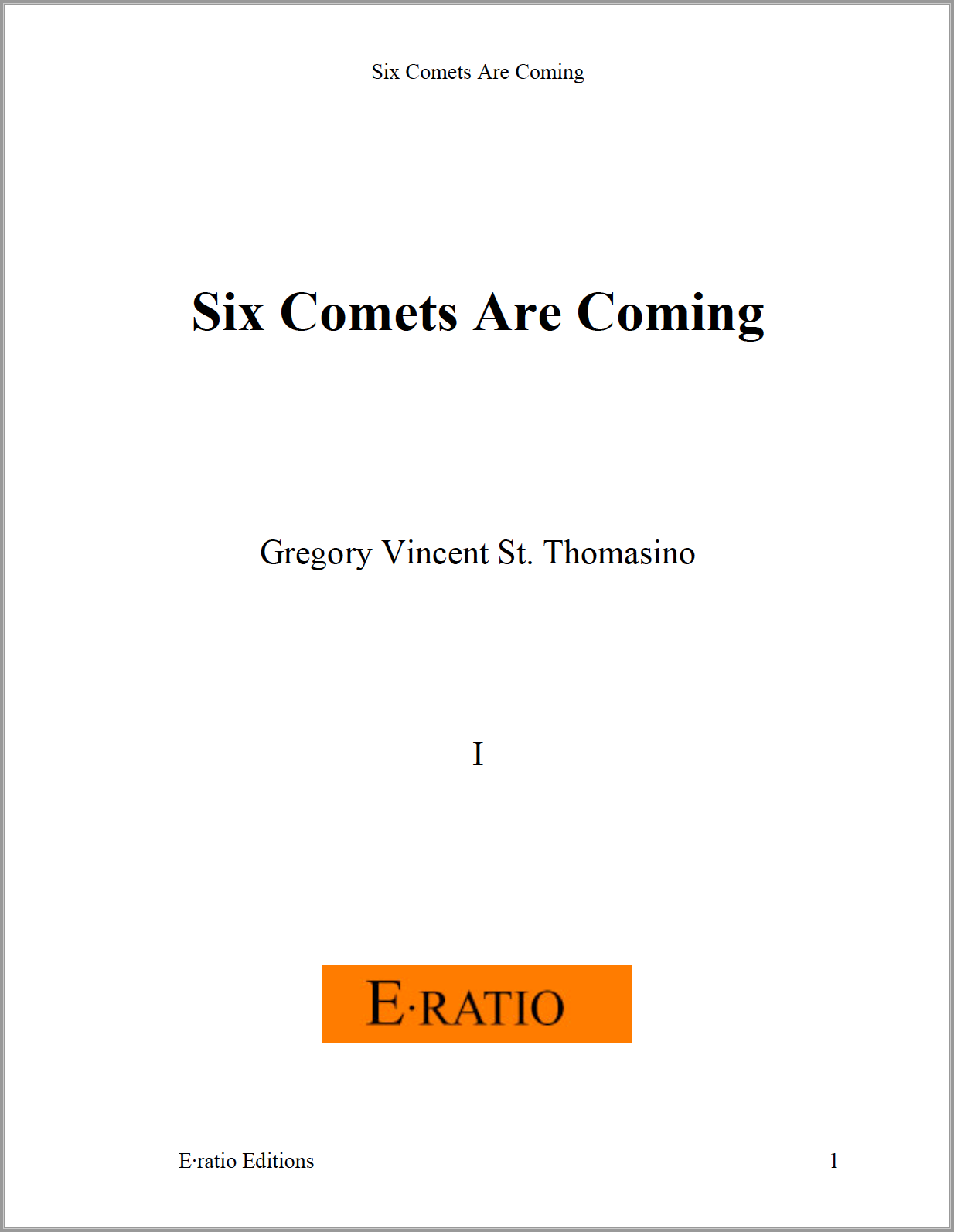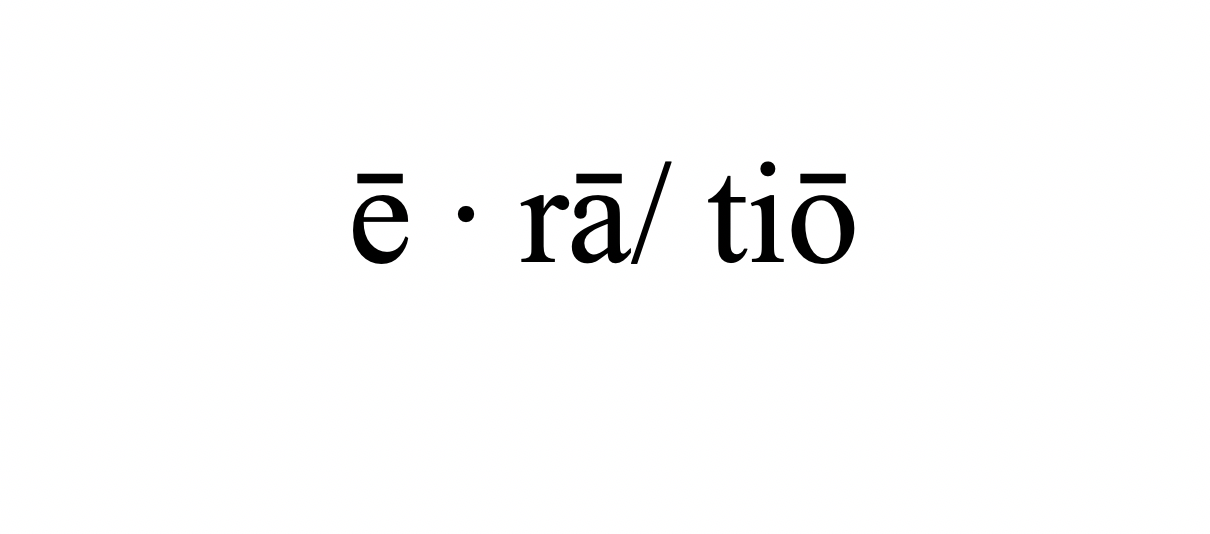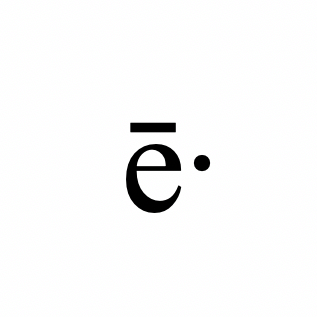A Selection of Visual Poems by Bob Grumman
I've been following Bob Grumman's writings, both poetic and theoretical, and his progress, and his various columns, since around 1993. I still have (of course) the first postcard he sent me, telling how busy he was and that a letter would soon follow. Well, that letter did follow, and many others after it. I consider my "Grumman correspondence" a personal literary treasure. Bob has always been "a compulsive explainer" (as he readily says in the "4word" to this, his latest collection, A Selection of Visual Poems) and his letters are chock full of compulsive explaining. You know, there is a whole literary genre, you might say, inhabited by writers who prefer personal correspondence, letter writting, as the vehicle by which and in which to express their ideas and opinions, and to maintain and articulate explanations and objectives for and about their work. And this, genre, is vast. And it's virtually anonymous, or, unknown, because the exchange of correspondence is personal, and may not see the light of day for years, and then maybe only posthumously. Think of the letters between Pound and Joyce, or between yourself and your own personal correspondents. I came on board just about when Bob began experimenting with mathematics and was discovering his mathemaku form and was publishing his first "specimen" (Bob has always enjoyed using scientific/experimental jargon). My initial impression of all this was to ask why anyone would want to "quantify" sentiments. Then Bob began sending me photocopies of more and more mathemaku specimen and I saw that my initial impression was all wrong, that Bob was not exactly "quantifying" sentiments as much as substituting math, or the arithmetical, for grammar. The end result was an amplification (or perhaps I should say "a mutiplication") of symbolism. Realizing this, I knew he was onto something worthwhile, something fascinating, and in time as I came to know a little and then a lot about Bob personally, I also realized why he had to make it different. Early on I recognized something important about Bob, that Bob was a poet—that Bob was indeed the genuine article. And like all poets, but especially Bob's type of poet (the same type as Emily Dickinson, I maintain, although Bob maintains he has no use for the wren, and yet I think he secretly delights in their kinship), he had to discover, to create, to originate a form to fit his poetic afflatus. And this "form" would equal that afflatus in idiosyncrasy. But it could not end with idiosyncrasy, there would have to be a gnomic element, something esoteric, something hidden. While Bob would both show and tell his poetry, he would almost withhold or protect the quintessence of that poetry, reserving—and preserving—that for his initiate, or, as it were, his lover. Because all of Bob's poetry is love poetry, love poetry aimed at an ideal lover! Some poets go through life in a sort of alienation from form, never really comfortable in any form (and it shows), but then others, of the type that share kinship with Bob, outright create their own form. (And after all, this is how new forms come into being.) To this day, what strikes me about the mathemaku is how uncannily literary they are—certainly, methinks, as literary as any typographical order by Cummings. Compared to Cummings, Bob's vocabulary (both word and picture) is stark and limited (no tulips or chimneys, but a store of indirectly communicated yearning and deep, almost dangerous, sensitivity), and Bob is in no wise prolific (as he readily confesses), although if one were to take into account his letters and columns and posted opinions—mighty generous opinions, I might add, in that they readily share where others, perhaps those less confident, hold back—one would find that there is a whole lot more than first imagined. In his "4word," Bob says that while he may not be prolific he is nonetheless "rigorous." Well, if by "rigorous" we also mean scrupulous, especially with regard to keeping safe that quintessence—and so it is no wonder that he is a master at indirect communication—and in the precise, if sometimes poetic, manner in which he strives to explain himself, then Bob is most certainly a rigorous poet, and especially where regards the pursuit of his ideal.
There are 26 pieces including cover art, the pages are not numbered. (All the works are in black and white.) We begin with "The Word." The word is "poem." And inside the "o" of "poem" is the word "morning," and inside the "o" of "morning" is the word "glory," and inside the "o" of "glory" is a face giving us a wink. This is fitting, because Bob is telling us there's more to visual poetry than meets the eye, and moreover, that "wink" says more than words can say (directly)—it's a signal that there is a quintessence here, but we must be playful and coax it out. Next is "Arrival," followed by "CREATIVITY" and then "the poem r." One might call these "alphabet" poems—the "arrival" of sound and musical pattern, the alphabet that is a fond of origin, essential to poetry. Here we have, not poetry as such, but some ideas that might serve as preamble, after our welcoming wink, to what follows.
Next comes a "visual poem" entitled "The Intellect at Work." "The Intellect at Work" is kidstuff, relying on a single visual trope that "sees" the word "REALITY," by a process of morphological development, "morph" into the word "DEFINITION." In lesser hands this page would not rate a second look. (As the situation stands, most visual poems are—and sadly so—one-trick ponies that fail to reward a closer reading.) But Bob makes the most of his two words. First, there is the suggestion that "DEFINITION" might somehow reside dormant or unrealized in, or be latent in, "REALITY." Ergo, a passsive, or undeveloped, reality will yield no definition. Moreover we notice that the word "DEFINITION" is enclosed inside a frame! Where did this frame come from? If we go back to the top of the page and again follow the word "REALITY" through its morphological development, we see that the outlines of the letters have joined together, closed circle or to delimit or cocoon as it were, thus releasing the morphemes—the minimal linguistic units—of the word within ("REALITY") from their phase as "REALITY," and thus as though to amnion (or chrysalis) the morphemes continue their generation, their metamorphosis, into "DEFINITION." And thus, definition is found in reality. Or, reality gives way, or gives birth, to definition. Or, reality can be defined. It's also interesting to watch (!) how the letters REAL "morph" (change shape, that is) into DEFINI (you simply must see this for yourself). Always, there are questions left over after reading Bob's work, for instance does he take the Greek word "morphe" to mean physical, material "shape" rather than functional form? I would ask him, then, does meaning turn upon the function or upon the material (of words)?
Next follows "Failed Disguise," and "The Serpent." These seem to be products of collage, cut up bits fitted together, and are two good reasons why I dislike the term "visual poetry." "Eidetics" is much more appropriate here. In "The Serpent," the vowels a, e, i, o and u, in string, are "snaking" across a (rather barren-looking) field of letters, broken language and what appears to be a tree right out of Beckett.
In "After Apollo," there is "moon," "sky," "THE EARTH" and "HEART." The "H" of "HEART" is moved to after the "T" to form "EARTH." I like this piece very much. Next is "April!" which, again, shows sound or musical pattern, or rhythm, arisen out of the rhythmic waves of the (alphabetic) sea of language.
"Revelation" reveals the word "truth" spelled "troooooooooooooooooooooooooooooth." "EROS: A DEFINITION" is perhaps a most cryptic mathemaku. (Out of summer comes eros.) "Paradise Enow, 1959" is a Bob Grumman-style haiku in which the word "love" is a mutual feeling. "Enow" is pronounced, "enough." Next is "Mathemaku No. 24d." This is one of only four mathemaku included in this collection. Also here are "Mathemaku for Ron Johnson," "Mathemaku for Richard Kostelanetz" and "Mathemaku for Karl Young." In my opinion, the mathemaku are without doubt Bob's best work, and they are the four best pieces in this collection. (I question Bob on his mathemaku work in my interview with him, and I recommend this to anyone interested in this aspect of his work. As I intend to write about the mathemaku at length elsewhere, I won't go into these pieces here, except to say they are all excellent, and really lovely.)
The remaining pieces are "NOCTURNE" (where day turns to night and then "the sound of her voice"), "The Huge Night" (which succeeds very well), "HOMAGE TO SHAKESPEARE" (one of Bob's classic pieces), "Summer," "Somewhere in Manhattan, 1958" (see what I mean about Cummings?), "The Four Seasons," "Homage to Wordsworth" (more classic Grumman), and "Homage to Athena" (again, classic Grumman, simple and to the point).
I can't complain about there being only four mathemaku in this collection because the mathemaku are avilable otherwise. What's important about A Selection is that it collects works that have to this point been scattered here and there. My only complaint is that they are not dated and their publication history is not provided.
A Selection of Visual Poems by Bob Grumman is Xerolage #30, published by Xexoxial Editions, 10375 Cty Hway A, LaFarge, WI, 54639.
Read The Bob Grumman Interview in ē·rātiō issue one, spring 2003.
Friday, March 05, 2004
Subscribe to:
Posts (Atom)

